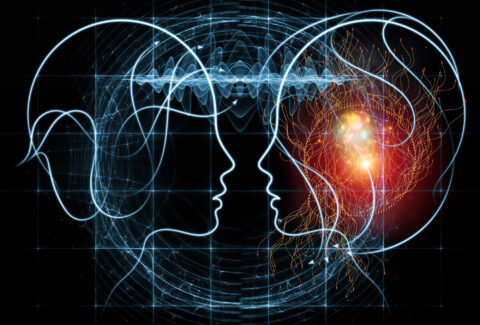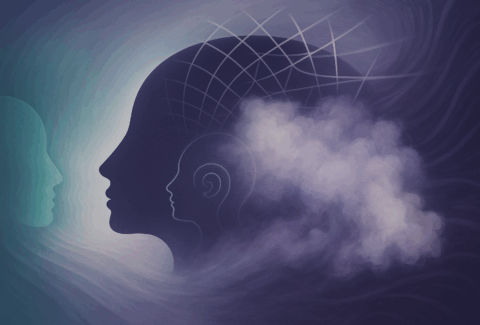What Is Interoception and Why It Matters: The Somatic Foundation of Emotion in the Theory of Constructed Emotion

What Is Interoception and Why It Matters: The Somatic Foundation of Emotion in the Theory of Constructed Emotion
Abstract
Interoception, the perception of internal bodily states, plays a foundational role in the construction of emotions. According to the Theory of Constructed Emotion (TCE), emotions are not reactive responses but predictive constructions rooted in bodily sensations and shaped by conceptual learning. This article explores the neuroscience of interoception, its role in emotional life, and its relevance to clinical work, self-regulation, trauma, and health. We examine how enhanced interoceptive awareness promotes emotional granularity and psychological well-being and how disrupted interoception is linked to psychiatric disorders such as anxiety, depression, and alexithymia.
Keywords
Interoception, Constructed Emotion, Emotional Awareness, Emotional Granularity, Mindfulness, Anxiety, Predictive Brain, Somatic Psychology
Introduction
For centuries, emotions have been viewed primarily as cognitive or reactive processes, with the body playing a secondary role. Recent research in neuroscience, however, reveals that emotional life is deeply embodied. At the core of this embodied perspective lies interoception—the brain’s process of sensing, interpreting, and predicting the internal state of the body (Craig, 2002; Barrett & Simmons, 2015).
In the Theory of Constructed Emotion, interoception serves as the raw material from which the brain constructs emotion concepts (Barrett, 2017). This shift in focus from cognition to sensation has significant implications for clinical work, self-understanding, trauma recovery, and emotional development.
Theoretical Framework
What Is Interoception?
Interoception refers to the processing of internal bodily sensations such as heartbeat, respiration, hunger, thirst, pain, and visceral feelings (Craig, 2002). It includes both bottom-up input from the body and top-down predictions from the brain. These predictions are continuously updated based on past experiences, goals, and environmental context (Seth & Friston, 2016).
Interoception in the Constructed Emotion Model
In the TCE framework, the brain uses interoceptive input to predict what bodily state is likely occurring and then categorizes it using learned emotion concepts (Barrett, 2017). This means that a fluttering chest could become “anxiety,” “excitement,” or even “love” depending on context, history, and belief.
Interoception is not just passive sensing; rather, it is active inference: the brain predicts internal changes and updates them only if prediction errors arise (Barrett & Simmons, 2015).
Application / Analysis
The Role of Interoception in Emotional Awareness
People with high interoceptive accuracy are more adept at identifying and regulating their emotions (Füstös et al., 2013). They can distinguish subtle variations in bodily signals, leading to greater emotional granularity, which is the ability to label emotions with specificity (Kashdan et al., 2015). Emotional granularity is linked to better coping, fewer mood swings, and reduced psychological distress.
Disrupted Interoception in Mental Health
Altered interoception has been implicated in:
- Anxiety and Panic Disorders: Misinterpretation of bodily cues (e.g., rapid heartbeat) as signs of danger (Domschke et al., 2010)
- Depression: Blunted interoceptive awareness and poor body-state regulation (Avery et al., 2014)
- Alexithymia: Difficulty identifying emotions due to low interoceptive access (Herbert et al., 2011)
- Eating Disorders and PTSD: Disturbed body ownership and dysregulated prediction about internal states (Khalsa et al., 2018)
Clinical Interventions that Target Interoception
- Mindfulness and Body Scan Practices enhance awareness of subtle sensations (Farb et al., 2015)
- Somatic Experiencing and Sensorimotor Psychotherapy use interoceptive cues to process trauma (Ogden & Fisher, 2015)
- CBT and ACT integrate awareness of bodily signals for emotional regulation (Hayes et al., 2006)
- Biofeedback helps improve accuracy in perceiving signals like heartbeat and breath (Schandry, 1981)
Implications
For Clinical Practice
Training clinicians and clients to work with bodily sensations as core elements of emotional experience offers an accessible route to insight and healing. By helping clients interpret interoceptive signals more accurately and flexibly, we can reduce distress and increase self-regulation capacity.
For Education and Prevention
Introducing interoception-based curricula in schools, such as breath awareness, mindful movement, and emotional vocabulary, can build resilience from a young age. These skills are especially critical in trauma-informed and emotionally supportive learning environments.
For Health and Public Policy
Interoception is linked to metabolic regulation, stress response, and immune functioning. Understanding its role bridges physical and mental health and calls for more integrative approaches to care (Critchley & Harrison, 2013).
Conclusion
Interoception is the foundation upon which emotions are built. As the brain predicts and categorizes bodily sensations, it constructs emotional experiences that guide our decisions, behavior, and well-being. Recognizing the centrality of interoception in the Theory of Constructed Emotion allows us to move from treating emotions as mysterious reactions to understanding them as deeply embodied predictions—predictions we can explore, refine, and ultimately transform.
References
- Avery, J. A., Drevets, W. C., Moseman, S. E., Bodurka, J., Barcalow, J. C., & Simmons, W. K. (2014). Major depressive disorder is associated with abnormal interoceptive activity and functional connectivity in the insula. Biological Psychiatry, 76(3), 258–266. https://doi.org/10.1016/j.biopsych.2013.11.027
- Barrett, L. F. (2017). How emotions are made: The secret life of the brain. Houghton Mifflin Harcourt.
- Barrett, L. F., & Simmons, W. K. (2015). Interoceptive predictions in the brain. Nature Reviews Neuroscience, 16(7), 419–429. https://doi.org/10.1038/nrn3950
- Craig, A. D. (2002). How do you feel? Interoception: The sense of the physiological condition of the body. Nature Reviews Neuroscience, 3(8), 655–666. https://doi.org/10.1038/nrn894
- Critchley, H. D., & Harrison, N. A. (2013). Visceral influences on brain and behavior. Neuron, 77(4), 624–638. https://doi.org/10.1016/j.neuron.2013.02.008
- Domschke, K., Stevens, S., Pfleiderer, B., & Gerlach, A. L. (2010). Interoceptive sensitivity in anxiety and anxiety disorders: An overview and integration of neurobiological findings. Clinical Psychology Review, 30(1), 1–11. https://doi.org/10.1016/j.cpr.2009.08.008
- Farb, N. A. S., Irving, J. A., Anderson, A. K., & Segal, Z. V. (2015). Mindfulness interventions and emotion regulation. In J. J. Gross (Ed.), Handbook of emotion regulation (2nd ed., pp. 548–567). Guilford Press.
- Füstös, J., Gramann, K., Herbert, B. M., & Pollatos, O. (2013). On the embodiment of emotion regulation: Interoceptive awareness facilitates reappraisal. Social Cognitive and Affective Neuroscience, 8(8), 911–917. https://doi.org/10.1093/scan/nss089
- Hayes, S. C., Luoma, J. B., Bond, F. W., Masuda, A., & Lillis, J. (2006). Acceptance and commitment therapy: Model, processes and outcomes. Behaviour Research and Therapy, 44(1), 1–25. https://doi.org/10.1016/j.brat.2005.06.006
- Herbert, B. M., Herbert, C., & Pollatos, O. (2011). On the relationship between interoceptive awareness and alexithymia: Is interoceptive awareness related to emotional awareness? Journal of Personality, 79(5), 1149–1175. https://doi.org/10.1111/j.1467-6494.2011.00717.x
- Khalsa, S. S., Adolphs, R., Cameron, O. G., Critchley, H. D., Davenport, P. W., Feinstein, J. S., … & Paulus, M. P. (2018). Interoception and mental health: A roadmap. Biological Psychiatry: Cognitive Neuroscience and Neuroimaging, 3(6), 501–513. https://doi.org/10.1016/j.bpsc.2017.12.004
- Ogden, P., & Fisher, J. (2015). Sensorimotor psychotherapy: Interventions for trauma and attachment. W. W. Norton & Company.
- Schandry, R. (1981). Heartbeat perception and emotional experience. Psychophysiology, 18(4), 483–488. https://doi.org/10.1111/j.1469-8986.1981.tb02486.x
- Seth, A. K., & Friston, K. J. (2016). Active interoceptive inference and the emotional brain. Philosophical Transactions of the Royal Society B: Biological Sciences, 371(1708), 20160007. https://doi.org/10.1098/rstb.2016.0007.
Download the scholarly version of this article by clicking HERE






